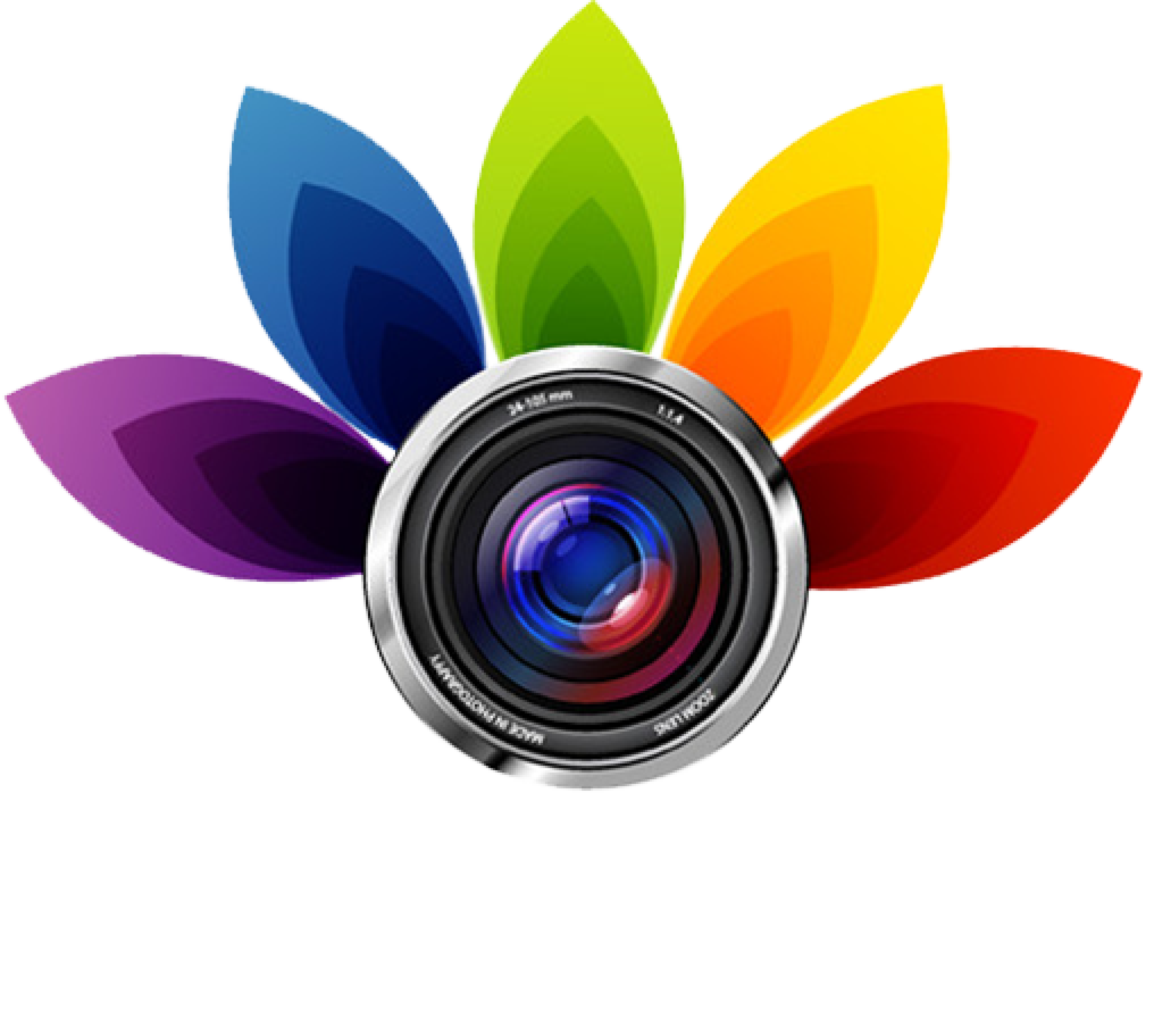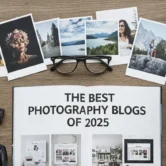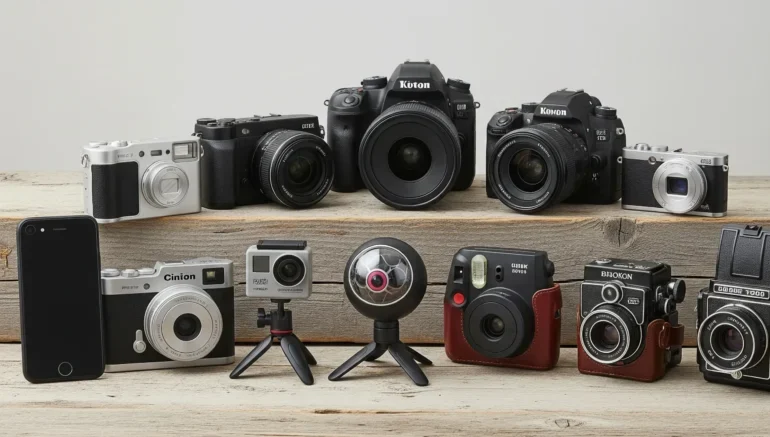
10 Popular Types of Cameras to Choose the Right Gear
Finding the right camera can feel confusing when there are so many types out there. Each camera has its own features, strengths, and uses. Some are made for quick and easy photos, while others offer full control for detailed shots. If you’re new to photography or just looking to upgrade, understanding the popular types of cameras can help you choose the gear that fits your style. The good news? You don’t need to be a pro to pick the right one, you just need the right guide.
In this article, we’ll walk you through 10 popular types of cameras and explain what makes each one special. If you’re taking travel photos, shooting videos, or snapping pictures for your online shop, there’s a camera made for your needs. We’ll keep things simple so you won’t feel lost in technical terms. By the end, you’ll have a better idea of which gear is right for you. Let’s explore your options and find the camera that works best for your goals.
Here are the Top Cameras you Need to Know
Smartphone Cameras
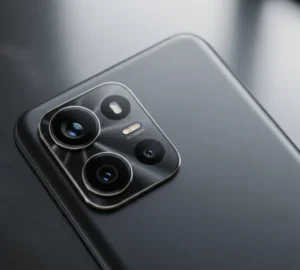 Smartphone cameras have come a long way in recent years. Most phones today are equipped with powerful lenses and smart features that let you take clear, high-quality photos without needing extra gear. If you’re snapping selfies, taking your travels, or filming short videos, your phone camera can often do the job well. The best part? It’s always with you, so you’ll never miss a moment. For casual users, beginners, or anyone who loves convenience, smartphone cameras are an easy and smart choice.
Smartphone cameras have come a long way in recent years. Most phones today are equipped with powerful lenses and smart features that let you take clear, high-quality photos without needing extra gear. If you’re snapping selfies, taking your travels, or filming short videos, your phone camera can often do the job well. The best part? It’s always with you, so you’ll never miss a moment. For casual users, beginners, or anyone who loves convenience, smartphone cameras are an easy and smart choice.
If you want to make the most of your phone’s camera, there are a few simple ways to improve your shots:
- Clean your lens regularly to avoid blurry photos.
- Use natural light whenever possible instead of flash.
- Explore your camera settings, most phones now offer pro or manual modes.
- Try different angles and framing to make your photos more interesting.
- Use a tripod or phone stand for steady shots, especially in low light.
Compact Cameras
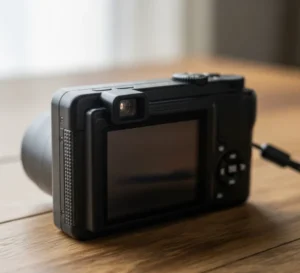 Compact cameras, also known as point-and-shoot cameras, are made for simple and quick photography. They’re small, light, and easy to carry, which makes them perfect for travel, family events, or everyday use. Most compact cameras are fully automatic, so you don’t need to worry about changing settings, just point, press, and shoot. Some models also come with zoom lenses and basic manual controls if you want more flexibility. They’re a good choice for people who want better image quality than a smartphone but still want something easy to use.
Compact cameras, also known as point-and-shoot cameras, are made for simple and quick photography. They’re small, light, and easy to carry, which makes them perfect for travel, family events, or everyday use. Most compact cameras are fully automatic, so you don’t need to worry about changing settings, just point, press, and shoot. Some models also come with zoom lenses and basic manual controls if you want more flexibility. They’re a good choice for people who want better image quality than a smartphone but still want something easy to use.
If you’re thinking of getting a compact camera, here are a few things to consider:
- Look for optical zoom instead of just digital zoom for clearer results.
- Choose one with image stabilization to reduce blurry photos.
- Pick a model with Wi-Fi or Bluetooth if you want to share photos quickly.
- Check battery life, a long-lasting battery is helpful for trips.
- Try different shooting modes like portrait, night, or landscape to get better results.
Bridge Cameras
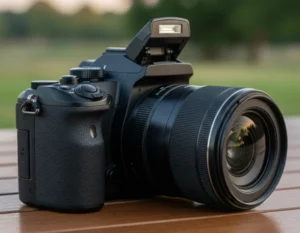 Bridge cameras are designed for people who want more features than a compact camera but aren’t ready for the size and price of a DSLR. They often have a DSLR-style body with a built-in lens that offers a wide zoom range, great for shooting both wide scenes and faraway subjects. These cameras give you more control over settings like shutter speed, ISO, and aperture, making them a good choice for learning manual photography. At the same time, they still offer automatic modes for quick, no-fuss shooting. You get the feel of a more serious camera without needing to change lenses or carry extra gear.
Bridge cameras are designed for people who want more features than a compact camera but aren’t ready for the size and price of a DSLR. They often have a DSLR-style body with a built-in lens that offers a wide zoom range, great for shooting both wide scenes and faraway subjects. These cameras give you more control over settings like shutter speed, ISO, and aperture, making them a good choice for learning manual photography. At the same time, they still offer automatic modes for quick, no-fuss shooting. You get the feel of a more serious camera without needing to change lenses or carry extra gear.
If you’re thinking about using a bridge camera, here are some tips to help you get better results:
- Look for a model with a long zoom lens if you like shooting from far distances.
- Use image stabilization when zooming in to avoid blurry photos.
- Explore manual settings to improve your skills and learn photography basics.
- Practice using the viewfinder for better control in natural light.
- Check for RAW photo support if you want more control during editing.
DSLR Cameras
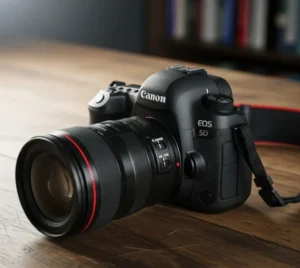 DSLR cameras (Digital Single-Lens Reflex) are popular with both beginners and professionals because they offer excellent image quality, fast performance, and full control over settings. They use a mirror system that lets you see exactly what the lens sees, which helps with accurate framing and focus. DSLRs also let you change lenses, so you can choose the right one for different situations, portraits, landscapes, sports, and more. Many models include auto modes for easy shooting and manual modes for creative control. If you’re serious about learning photography, a DSLR is a strong choice.
DSLR cameras (Digital Single-Lens Reflex) are popular with both beginners and professionals because they offer excellent image quality, fast performance, and full control over settings. They use a mirror system that lets you see exactly what the lens sees, which helps with accurate framing and focus. DSLRs also let you change lenses, so you can choose the right one for different situations, portraits, landscapes, sports, and more. Many models include auto modes for easy shooting and manual modes for creative control. If you’re serious about learning photography, a DSLR is a strong choice.
To get the most out of your DSLR, here are some beginner-friendly tips:
- Start with a basic lens, like an 18-55mm, to cover general needs.
- Use manual mode to practice with ISO, shutter speed, and aperture.
- Try different lenses based on your subject, like a 50mm for portraits.
- Learn to use the viewfinder for better framing and focus.
- Keep your sensor and lens clean to avoid spots in your photos.
Mirrorless Cameras
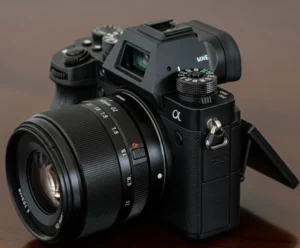 Mirrorless cameras are a modern type of camera that don’t use the mirror system found in DSLRs. This design makes them lighter and more compact, which is great for travel or everyday use. Even though they’re smaller, they still offer excellent image quality and many of the same features as DSLRs, like manual settings and lens options. Many mirrorless models also come with fast autofocus and clear digital screens or electronic viewfinders. They’re perfect for beginners who want easy handling, and also for advanced users looking for powerful performance in a lighter package.
Mirrorless cameras are a modern type of camera that don’t use the mirror system found in DSLRs. This design makes them lighter and more compact, which is great for travel or everyday use. Even though they’re smaller, they still offer excellent image quality and many of the same features as DSLRs, like manual settings and lens options. Many mirrorless models also come with fast autofocus and clear digital screens or electronic viewfinders. They’re perfect for beginners who want easy handling, and also for advanced users looking for powerful performance in a lighter package.
Here are some simple tips to help you use a mirrorless camera better:
- Try different lenses to match your subject, just like with DSLRs.
- Use the electronic viewfinder to preview how your settings affect the shot.
- Explore the touch screen features for faster focus and menu use.
- Keep an extra battery since mirrorless cameras can use power quickly.
- Practice with manual settings to gain more creative control.
Action Cameras
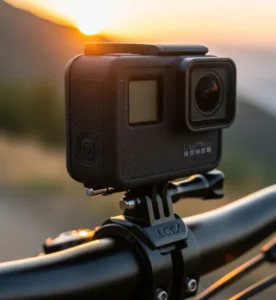 Action cameras are built for movement, adventure, and tough environments. These small and lightweight devices are perfect for recording outdoor activities like biking, surfing, hiking, or even underwater diving. They usually have wide-angle lenses that let you get more of the scene, even when you’re on the go. Most models are waterproof, shockproof, and made to handle rough use, so you don’t have to worry about dropping or bumping them. If you enjoy action-packed moments or want to record fun travel clips, an action camera is a solid pick.
Action cameras are built for movement, adventure, and tough environments. These small and lightweight devices are perfect for recording outdoor activities like biking, surfing, hiking, or even underwater diving. They usually have wide-angle lenses that let you get more of the scene, even when you’re on the go. Most models are waterproof, shockproof, and made to handle rough use, so you don’t have to worry about dropping or bumping them. If you enjoy action-packed moments or want to record fun travel clips, an action camera is a solid pick.
To get better results from your action camera, keep these tips in mind:
- Use a stable mount like a helmet, chest, or bike mount for steady shots.
- Turn on image stabilization to reduce shaky footage.
- Set a higher frame rate if you want smoother videos or slow-motion effects.
- Make use of time-lapse or burst mode for creative clips and fast action.
- Carry extra memory cards and batteries, especially for long outdoor trips.
360-Degree Cameras
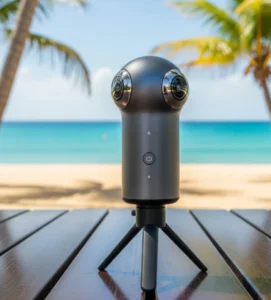 360-degree cameras are designed to photograph everything around you in one shot, front, back, and all sides. These cameras use two or more lenses to record a full view, which you can later explore by moving the image or scrolling around. They’re popular for virtual tours, creative videos, and interactive content on social media. If you’re taking a travel scene, an event, or an action moment, 360 cameras give a new way to share experiences. They’re a fun and modern choice for users who want something beyond standard photos and videos.
360-degree cameras are designed to photograph everything around you in one shot, front, back, and all sides. These cameras use two or more lenses to record a full view, which you can later explore by moving the image or scrolling around. They’re popular for virtual tours, creative videos, and interactive content on social media. If you’re taking a travel scene, an event, or an action moment, 360 cameras give a new way to share experiences. They’re a fun and modern choice for users who want something beyond standard photos and videos.
If you’re planning to try a 360-degree camera, here are a few helpful tips:
- Keep your fingers away from the lens, it’s easy to block part of the view.
- Use a selfie stick or tripod to get better balance and full surroundings.
- Edit your shots with 360 apps to crop, add effects, or adjust views.
- Choose high resolution to keep your footage clear when viewers zoom in.
- Think about your surroundings since everything around you will be visible.
Instant Cameras
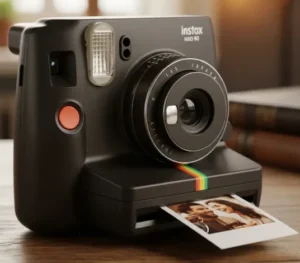 Instant cameras are known for giving you printed photos in just a few seconds after you take the shot. They bring a fun and nostalgic feel to photography, making them a favorite for parties, travel, or personal keepsakes. You don’t need to worry about editing or uploading, just snap and wait for the print to come out. Most instant cameras are very easy to use, with simple controls and a fixed lens. They’re perfect for people who enjoy holding a real photo in their hands instead of just storing pictures on a screen.
Instant cameras are known for giving you printed photos in just a few seconds after you take the shot. They bring a fun and nostalgic feel to photography, making them a favorite for parties, travel, or personal keepsakes. You don’t need to worry about editing or uploading, just snap and wait for the print to come out. Most instant cameras are very easy to use, with simple controls and a fixed lens. They’re perfect for people who enjoy holding a real photo in their hands instead of just storing pictures on a screen.
Here are some tips to help you enjoy your instant camera even more:
- Take photos in good lighting to get clear and sharp prints.
- Avoid shaking the photo while it’s developing, just let it sit still.
- Use the mirror (if available) to help with selfies.
- Keep your film stored properly to avoid damage from heat or moisture.
- Try creative framing since you can’t crop or edit later.
Film Cameras
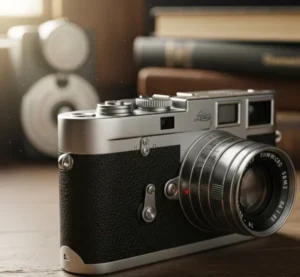 Film cameras use rolls of film to take photos, just like people did before digital cameras became popular. Instead of seeing your photo right away, you’ll need to develop the film, which makes the process slower but more exciting. Many people enjoy film photography because it has a soft, natural look that’s hard to copy with digital cameras. It also encourages you to think more before clicking, since film is limited. Film cameras are great for those who want a hands-on, classic way to enjoy photography.
Film cameras use rolls of film to take photos, just like people did before digital cameras became popular. Instead of seeing your photo right away, you’ll need to develop the film, which makes the process slower but more exciting. Many people enjoy film photography because it has a soft, natural look that’s hard to copy with digital cameras. It also encourages you to think more before clicking, since film is limited. Film cameras are great for those who want a hands-on, classic way to enjoy photography.
If you’re planning to try film photography, here are some simple tips:
- Choose the right film, different types offer different tones and colors.
- Keep your camera steady to avoid blurry shots since you can’t preview.
- Be careful when loading and unloading film to avoid exposure.
- Store film in a cool, dry place to keep it in good condition.
- Try shooting in natural light to make the most of your film’s quality.
Medium Format Cameras
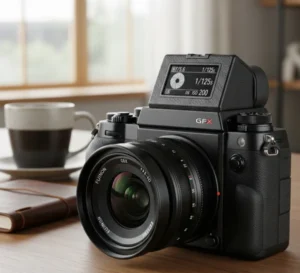 Medium format cameras are known for their large sensors, which are even bigger than those in full-frame DSLRs. This gives them the ability to take more detail, better color depth, and a high dynamic range. They’re mostly used by professional photographers for high-end work like fashion, portraits, product shots, and large prints. Because of their size and price, these cameras aren’t typically used for everyday photography. But if you’re aiming for top-quality results and have the budget, medium format gear can be a powerful tool.
Medium format cameras are known for their large sensors, which are even bigger than those in full-frame DSLRs. This gives them the ability to take more detail, better color depth, and a high dynamic range. They’re mostly used by professional photographers for high-end work like fashion, portraits, product shots, and large prints. Because of their size and price, these cameras aren’t typically used for everyday photography. But if you’re aiming for top-quality results and have the budget, medium format gear can be a powerful tool.
Here are a few tips if you’re planning to explore medium format cameras:
- Use a tripod to keep your shots steady, these cameras are often heavier.
- Focus carefully since the depth of field can be very shallow.
- Shoot in RAW format to take full advantage of the camera’s quality.
- Make sure your lighting is strong to highlight the camera’s detail.
- Know your purpose, these cameras are best for controlled photo shoots, not quick snapshots.
Conclusion
Choosing the right camera really depends on what you want to shoot and how you plan to use it. From simple smartphone snaps to professional-level medium format shots, there’s a camera out there for every type of user. If you want something light and easy or gear with full control and high detail, knowing your options makes a big difference. We hope this guide helped you get a clearer idea of what camera suits your needs and style. Got a favorite camera type or one you’re thinking about trying? Share it in the comments, we’d love to hear your thoughts and help you explore even more.
Read Next: 6 Lighting Mistakes to Avoid in E-Commerce Photography
